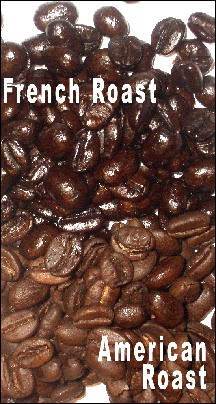Iced coffee is the summer alternative to hot coffee for some of us. To some it is a new idea. Drink it black or with milk, drink it with or without sugar, but drink it over ice.
 This refreshing coffee treat can come in many varieties, flavor and price. You can get an iced coffee just about anywhere now and they are all made differently and the prices, WOW can that hurt!
This refreshing coffee treat can come in many varieties, flavor and price. You can get an iced coffee just about anywhere now and they are all made differently and the prices, WOW can that hurt!
Some places use powdered something and coffee that comes in a jug, some use a coffee syrup while others are really using fresh milk, fresh brewed coffee, sugar and flavoring. But I am suggesting a better way. Make your own and keep it ready in the refrigerator. It is ready in seconds to pour and go. Not only will you save a fortune but you know what is really in your cup. You decide if you only want good stuff or some unknown stuff. Here is our recipe that we offer at Tastings and fund-raisers (well not exactly, there is a secret ingredient).
MJ Iced Coffee
Make 1 gallon
3/4 Gal. Midwest Coffee Company Mocha Java Blend
Whole Milk
1-1½ Cups Sugar (your desired sweetness)
1 Tablespoon Pure Vanilla Extract
Dissolve sugar into coffee when hot, add vanilla, and pour into a gallon jug, fill the remainder with milk. Chill and serve over ice.
This will stay fresh as long as your milk is good.
I promise this will be the best Iced Coffee you have ever had. I think it is because it is just a pure clean, chemical free glass of Iced Coffee. And then there is the fact that our Mocha Java is in it, it really does make a difference. With a bonus of the dollars you save not buying out.
Here are some variations you can use to create your own personal Iced Coffee. If you come up with some other great creation, let me know.
Whole, 2%, skimmed milk
White Sugar, Splenda, Honey or Real Maple Syrup
Vanilla, Almond, Maple or Fruit Extracts
Try a different origin of coffee, such as: Colombia Sierra Nevada or Sumatra SWP Decaf
Using your French Press will allow experimenting even more.
Try adding spices, cocoa and/or orange zest.
My experiment today in the French Press was:
1 tablespoon of each MCC Organic SWP Decaf Sumatra and Mexico
1 teaspoon Organic Cocoa Powder
Pinch of Cinnamon
Chill
Fill a tall glass ½ full, stir in organic sugar, add ice, and fill the remainder of the glass with milk.
Oh! That was good. The only caffeine was from the cocoa powder.

 We have been experimenting with a
We have been experimenting with a  In
In 
 To French Roast or Not to French Roast?
To French Roast or Not to French Roast?